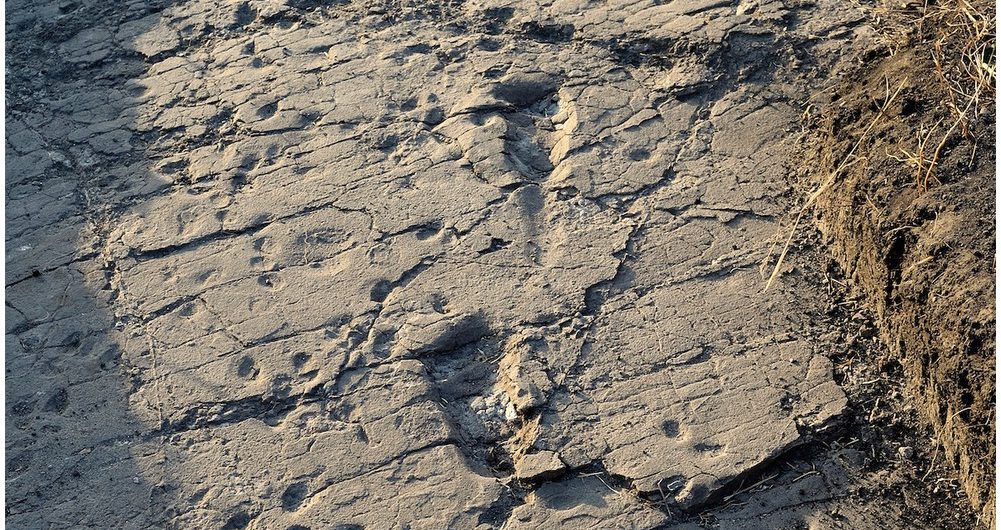As we delve into the fascinating world of prehistoric Africa, one of the most intriguing discoveries of the past century is the Laetoli footprints in Tanzania. These 3.6 million-year-old tracks belong to early human ancestors who once roamed the vast plains of East Africa, and they provide a rare glimpse into the daily lives of our distant relatives.
The Laetoli footprints are a remarkable example of how scientific discoveries can provide insights into our shared human heritage. These ancient footprints have helped us understand the evolution of bipedalism, the morphology of early hominins, and the daily lives of our distant ancestors. If you have the opportunity to visit Laetoli, you will be able to stand in the footsteps of history and witness one of the most significant archaeological discoveries of the modern era. However, even if you are unable to visit the site in person, the Laetoli footprints continue to capture the imagination of people around the world and provide a unique window into our shared evolutionary past.
In this article, we will take a closer look at the Laetoli footprints, the scientific discoveries and implications, and how you can visit this historic site for yourself.
History of the Laetoli Footprints
In 1974, a team of archaeologists led by Mary Leakey discovered a series of fossilized footprints in the Laetoli region of Tanzania, approximately 45 kilometers south of Olduvai Gorge. The prints were preserved in volcanic ash, and they represented the earliest known evidence of bipedalism – the ability to walk on two legs – in our evolutionary history. The footprints were dated to around 3.6 million years ago, which meant they were made by Australopithecus afarensis, a species of early hominins that are believed to be the direct ancestors of modern humans.
The Laetoli footprints were made by three individuals – two adults and a child – who walked across the ash-covered landscape. The footprints were remarkably well-preserved, with clear outlines of the toes, heels, and arches. Analysis of the prints revealed that the individuals walked upright, with a gait similar to that of modern humans. They also showed that the individuals had a small body size and a unique foot shape that was adapted to walking on two legs.
Scientific Discoveries and Implications
The Laetoli footprints have provided scientists with a wealth of information about early hominin behavior and morphology. The fact that the footprints were made by individuals who walked upright suggests that bipedalism was an important evolutionary development that helped our ancestors survive and thrive in their environment. The footprints also shed light on the gait, body size, and foot shape of early hominins, which can be used to reconstruct their anatomy and movement patterns.
In addition to their scientific significance, the Laetoli footprints have captured the public imagination and inspired generations of people to learn more about human evolution. They have been featured in countless books, documentaries, and museum exhibits, and they continue to be a source of fascination for scientists and laypeople alike.
Visiting Laetoli
If you are interested in seeing the Laetoli footprints for yourself, there are a few things you should know. The site is located in a remote area of Tanzania, and access is restricted to protect the fragile fossilized footprints. Visitors must obtain a permit from the Tanzanian government and be accompanied by a licensed guide. The site itself is a flat, open plain, with no shade or amenities, so visitors should come prepared with sunscreen, water, and appropriate clothing.
Despite the challenges of visiting Laetoli, seeing the footprints in person is an unforgettable experience that brings us closer to our evolutionary origins. Standing in the footsteps of our ancient ancestors, we can feel a connection to the distant past and gain a deeper appreciation for the journey that has led us to where we are today.
Further Research on Laetoli
Since their discovery, the Laetoli footprints have continued to be the subject of extensive research and scientific inquiry. In recent years, new technologies such as 3D scanning and photogrammetry have allowed scientists to create highly detailed digital models of the footprints, which can be used to study their structure and movement in greater detail than ever before.
Researchers have also used the footprints to gain insights into early hominin social behavior. For example, in 2016, a team of scientists published a study in the journal Scientific Reports that analyzed the footprints for evidence of group behavior. They found that the footprints were made by individuals who were walking together, suggesting that early hominins may have lived in social groups similar to those of modern humans.
The Laetoli footprints have also played a key role in debates about the origins of bipedalism. While it is generally agreed that bipedalism was a crucial evolutionary development, there is still much debate about why it emerged and how it evolved. The Laetoli footprints, along with other fossil evidence, provide important clues about the evolution of bipedalism and the factors that drove its emergence.
In Conclusion
In conclusion, the Laetoli footprints are a remarkable testament to our shared evolutionary history. They provide a rare glimpse into the lives of our distant ancestors, and they continue to inspire scientific research and public fascination more than 40 years after their discovery. Whether you are a scientist studying early human evolution or a curious traveler seeking to learn more about the world around us, the Laetoli footprints are a fascinating and important destination that should not be missed.
If you are interested in visiting Laetoli or learning more about the footprints and their scientific significance, there are many resources available online and in print. Whether you are an experienced scientist or a curious layperson, the Laetoli footprints are a testament to the enduring power of human curiosity and the importance of understanding our shared evolutionary history.
![]()


Comments